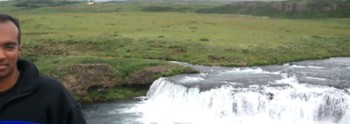An interesting, detailed article that hopefully bursts at least a few bubbles (pun intended):
...The message is clear: Bottled water is "good" water, as opposed to that nasty, unsafe stuff that comes out of the tap. But in most cases tap water adheres to stricter purity standards than bottled water, whose source -- far from a mountain spring -- can be the parking lot of an industrial facility in New Jersey. Forty percent of it began life as, well, tap water.
...When Good Morning America conducted a taste test of its studio audience, New York City tap water was chosen as the heavy favorite over the oxygenated water 02, Poland Spring and Evian.
...The number one (Aquafina) and two (Dasani) top-selling brands of bottled water in the U.S. both fall in the category of purified water. Dasani is sold by Coca-Cola, while Aquafina is a Pepsi product. As U.S. News & World Report explains, "Aquafina is municipal water from spots like Wichita, Kansas." The newsmagazine continues, "Coke's Dasani (with minerals added) is taken from the taps of Queens, New York, Jacksonville, Florida, and elsewhere." Everest bottled water originates from southern Texas, while Yosemite brand is drawn from the Los Angeles suburbs.
I've been noodling a bit to find the reason that I find so much glee in this report. One possibility is that while it's intellectually possible for bottled water to be a real necessity, for way too many folks it's a holier-than-thou statement that permeates all the way down to the water they need to drink. The People can drink their water but I need my Dasani.
Perhaps this is a fun story because it's a microcosm of so many US / European differences - you can pay $5 for your ambience-heavy, imported Evian while Joe Sixpack pays nothing and is actually drinking better water.
And that's before we get into the environmental issues:
More and more environmentalists are beginning to question the purpose of lugging those heavy, inefficient, polluting bottles all over the Earth. The WWF argues that the distribution of bottled water requires substantially more fuel than delivering tap water, especially since over 22 million tons of the bottled liquid is transferred each year from country to country.


